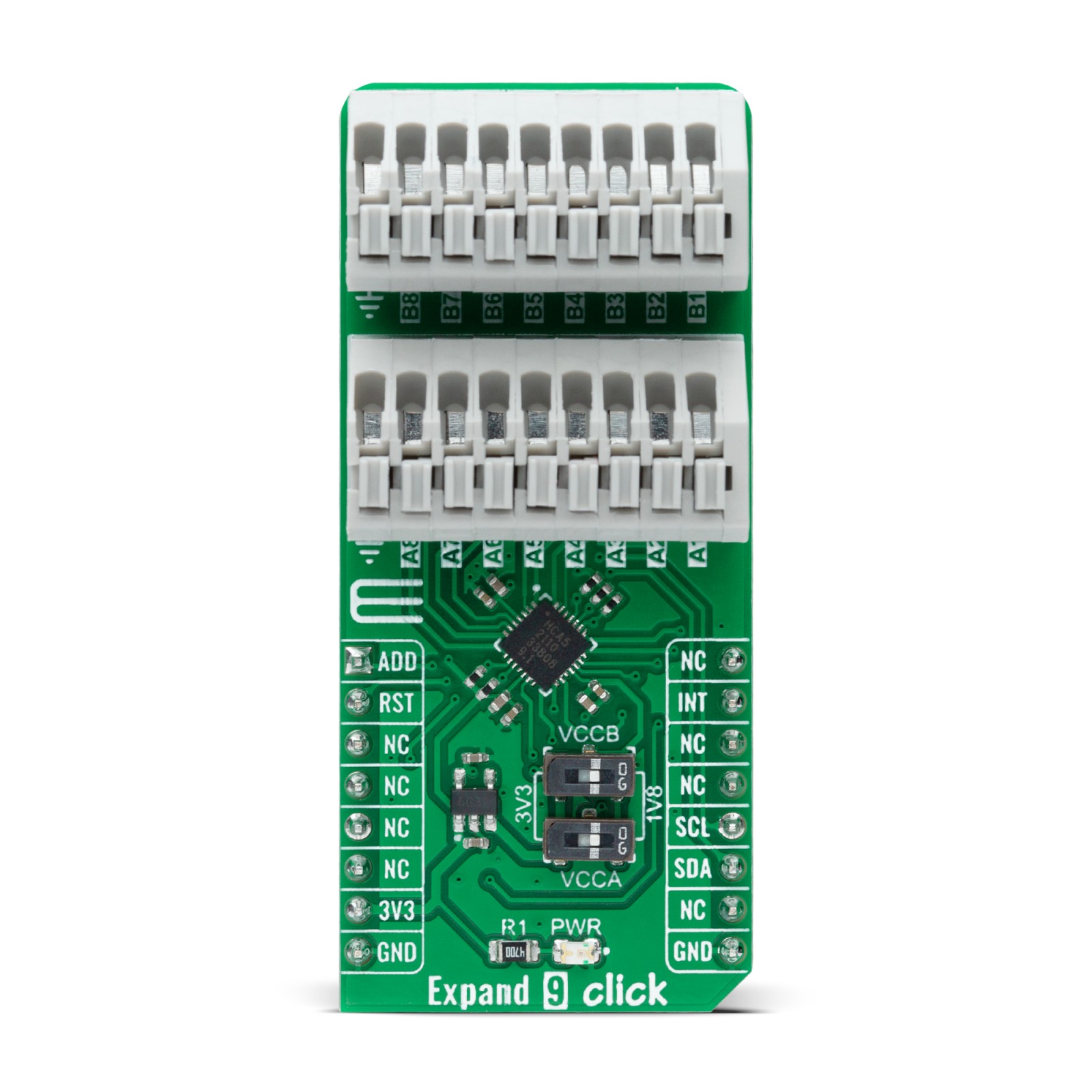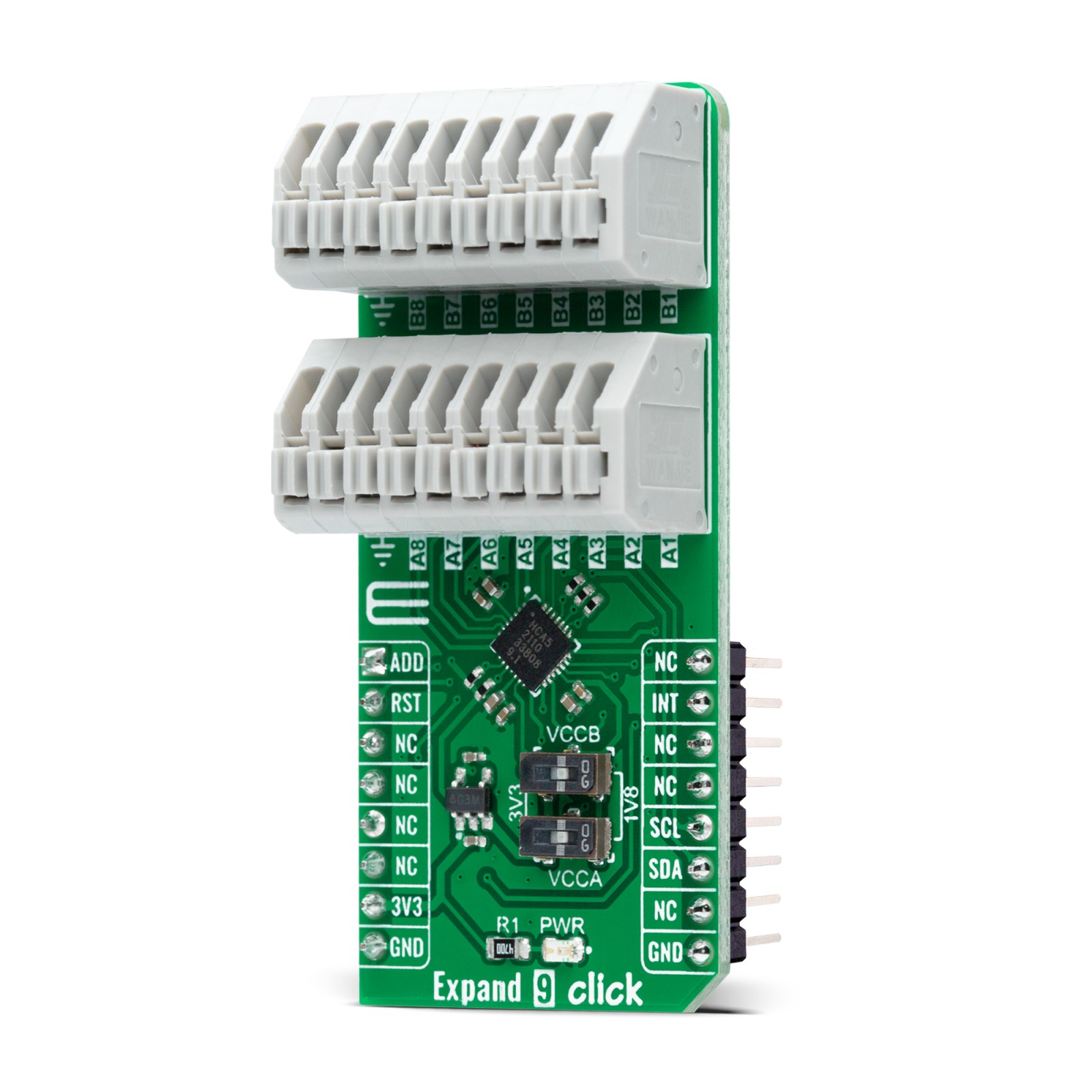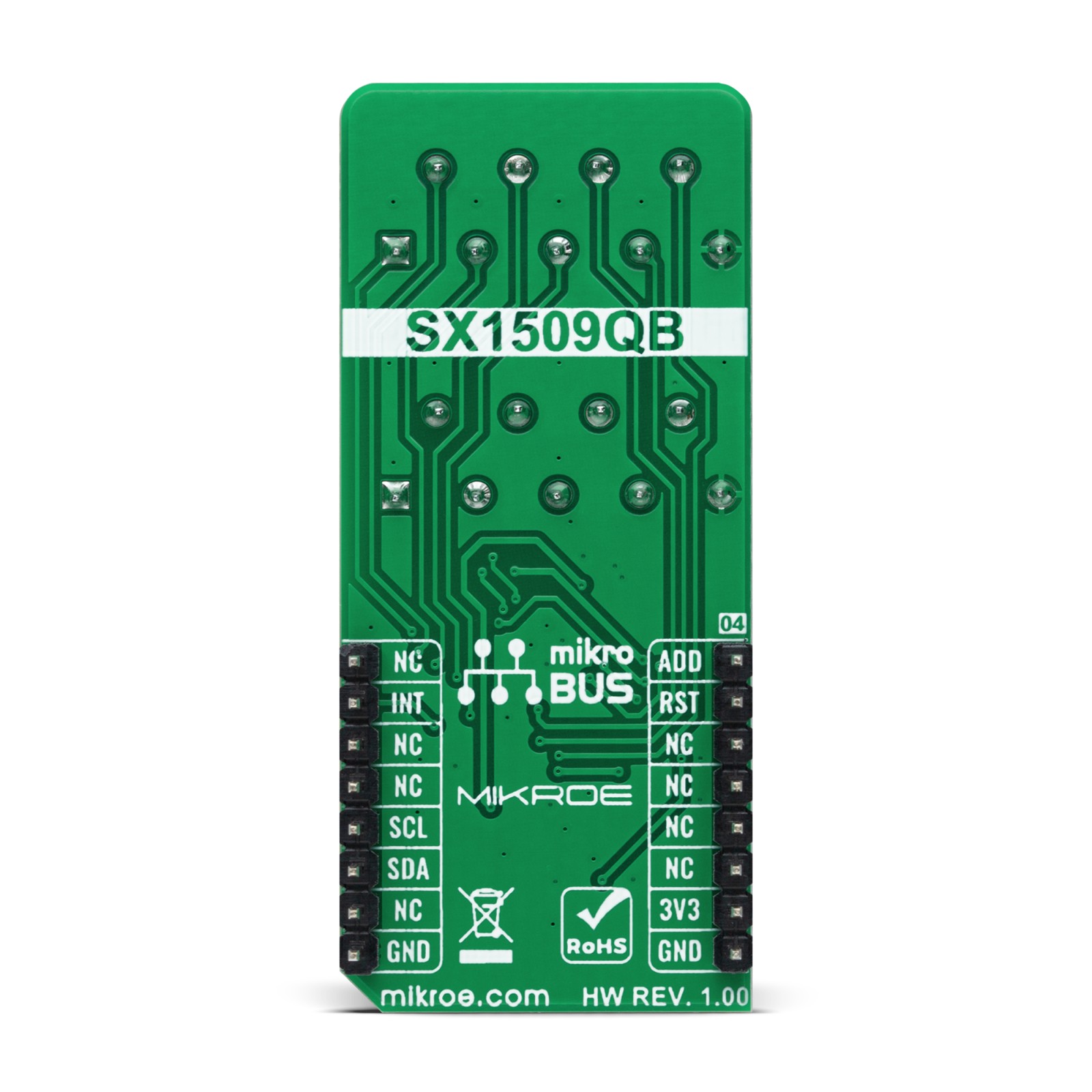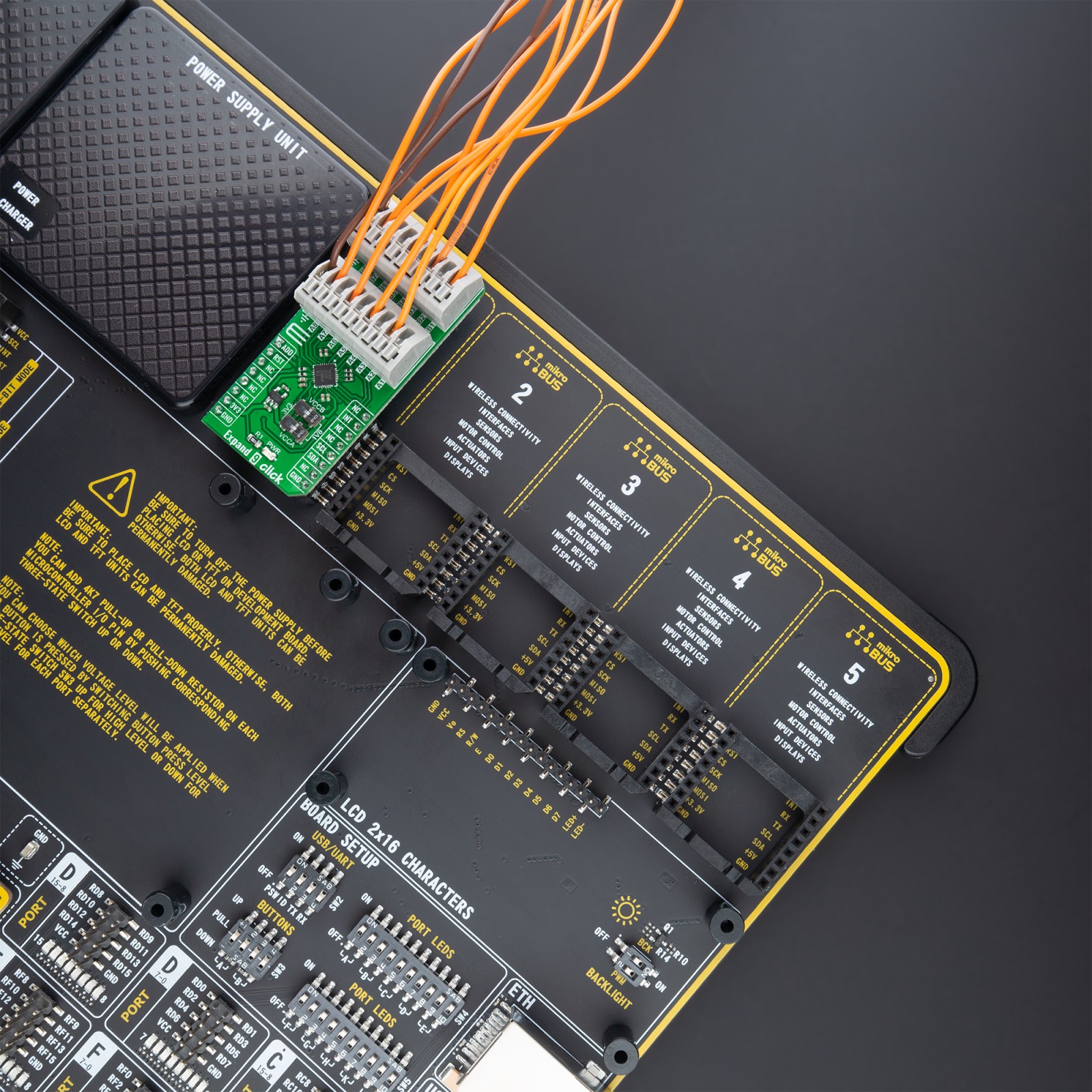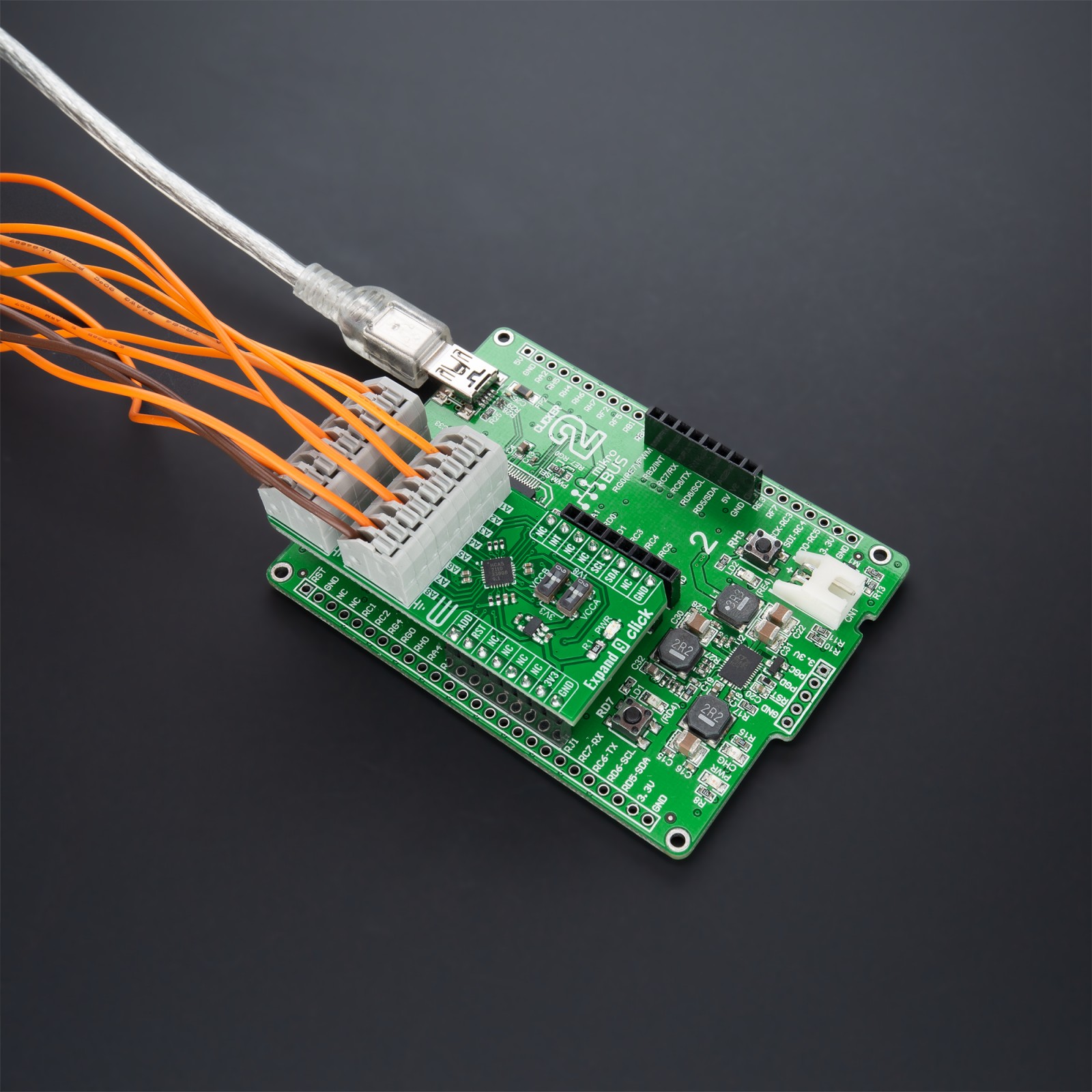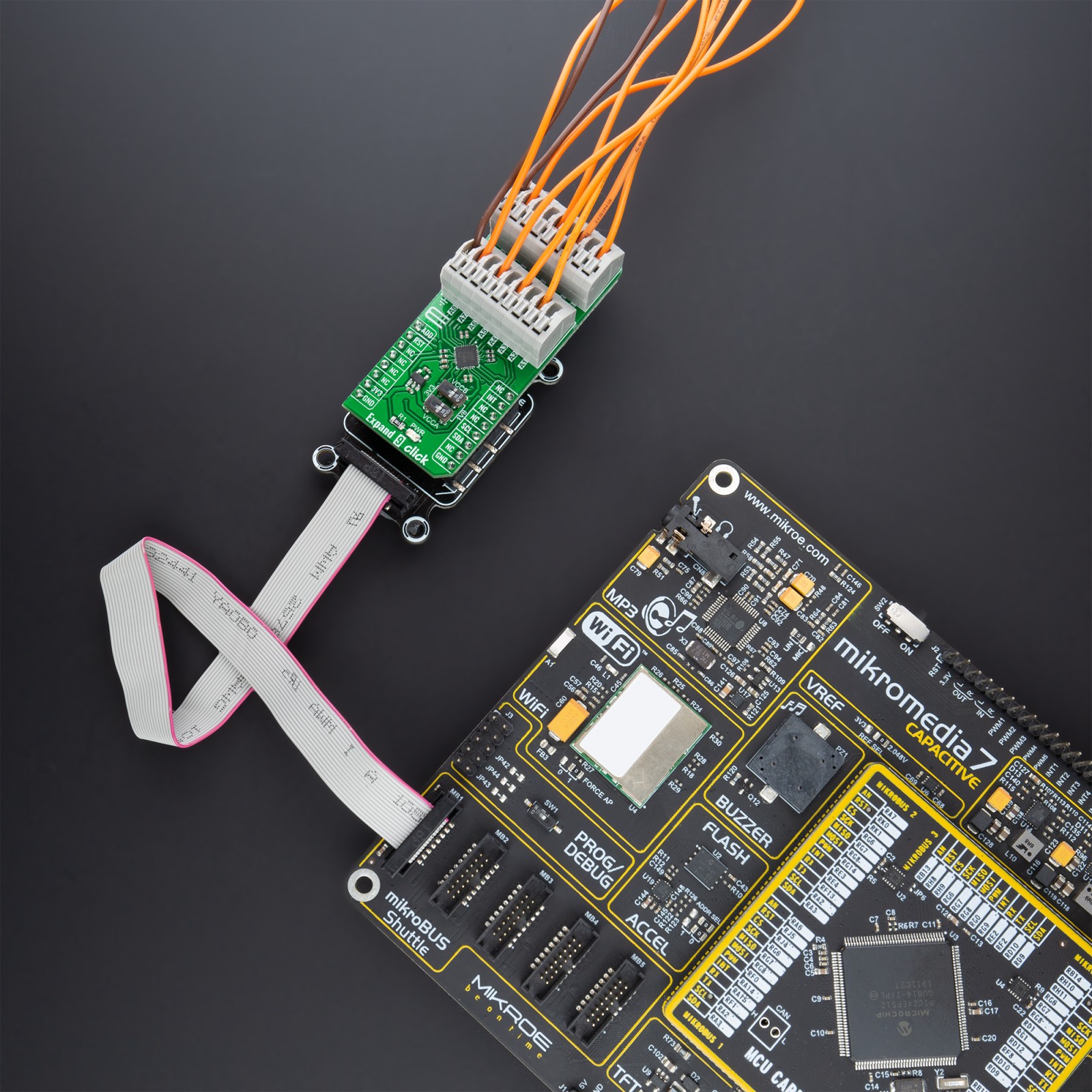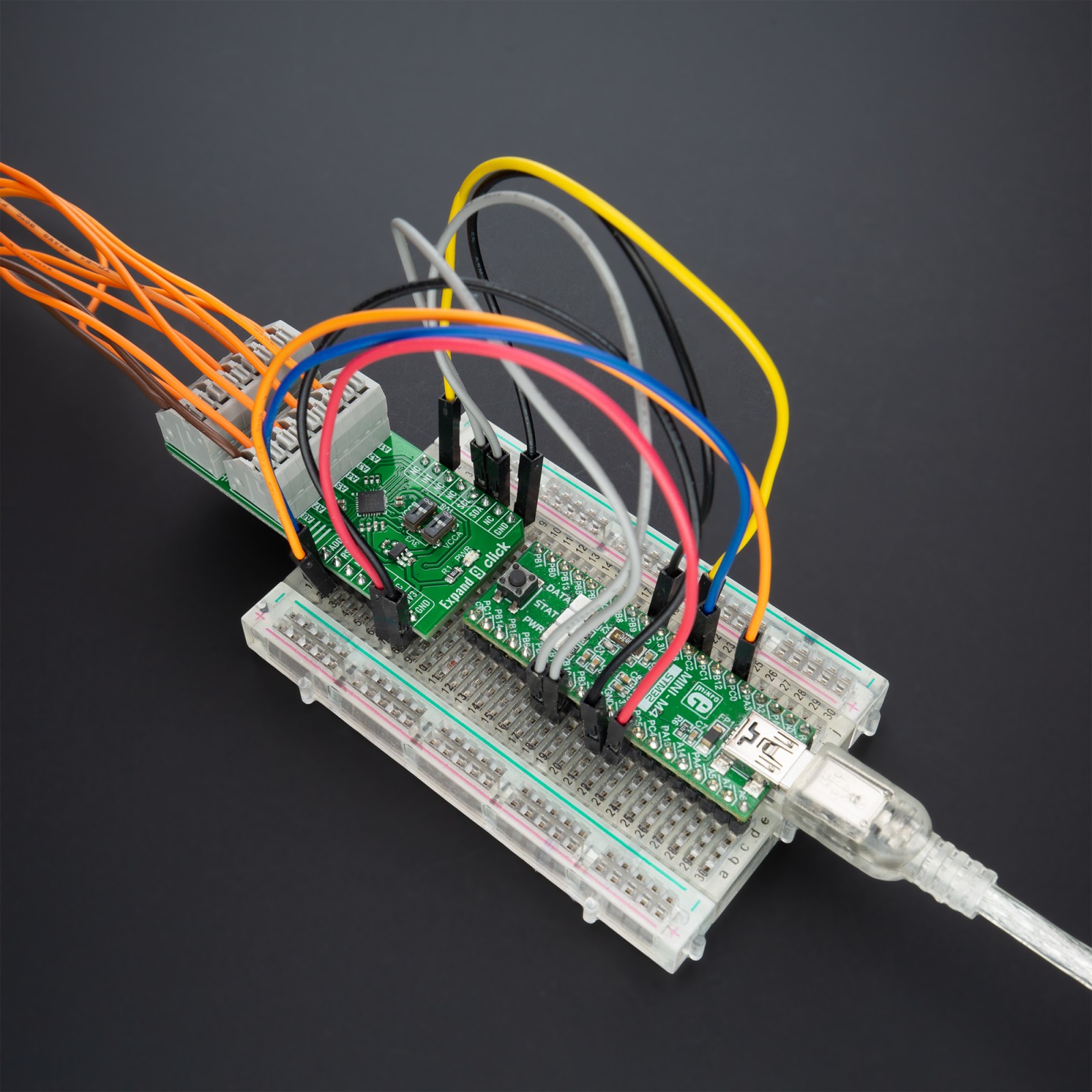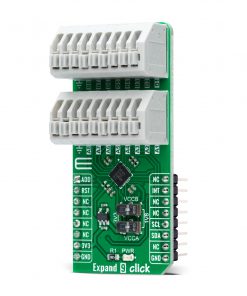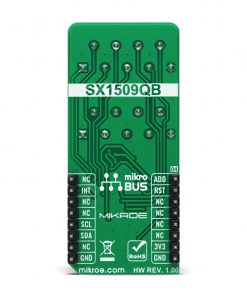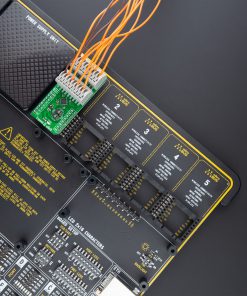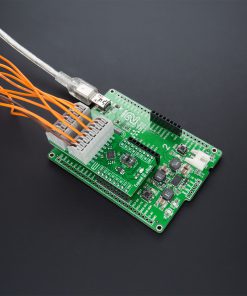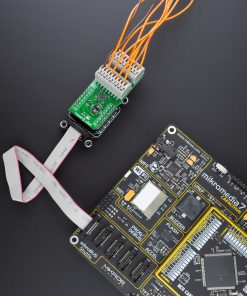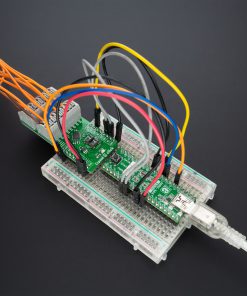Expand 9 Click
R515.00 ex. VAT
Expand 9 Click is a compact add-on board that contains a multi-port I/O expander. This board features the SX1509QB, the world’s lowest voltage level shifting GPIO expander from Semtech Corporation. The SX1509QB comes in a 16-channel configuration and allows easy serial expansion of I/O through a standard I2C serial interface. It also has a built-in level shifting feature making it highly flexible in power supply systems where communication between incompatible I/O voltages is required, an integrated LED driver for enhanced lighting, and a keypad scanning engine to implement keypad applications up to 8×8 matrix. This Click board™ provides a simple solution when additional I/Os are needed, suitable for low-power portable equipment, keypad scanning, driving LEDs, and many more.
Expand 9 Click is supported by a mikroSDK compliant library, which includes functions that simplify software development. This Click board™ comes as a fully tested product, ready to be used on a system equipped with the mikroBUS™ socket.
Stock: Lead-time applicable.
| 5+ | R489.25 |
| 10+ | R463.50 |
| 15+ | R437.75 |
| 20+ | R421.27 |

